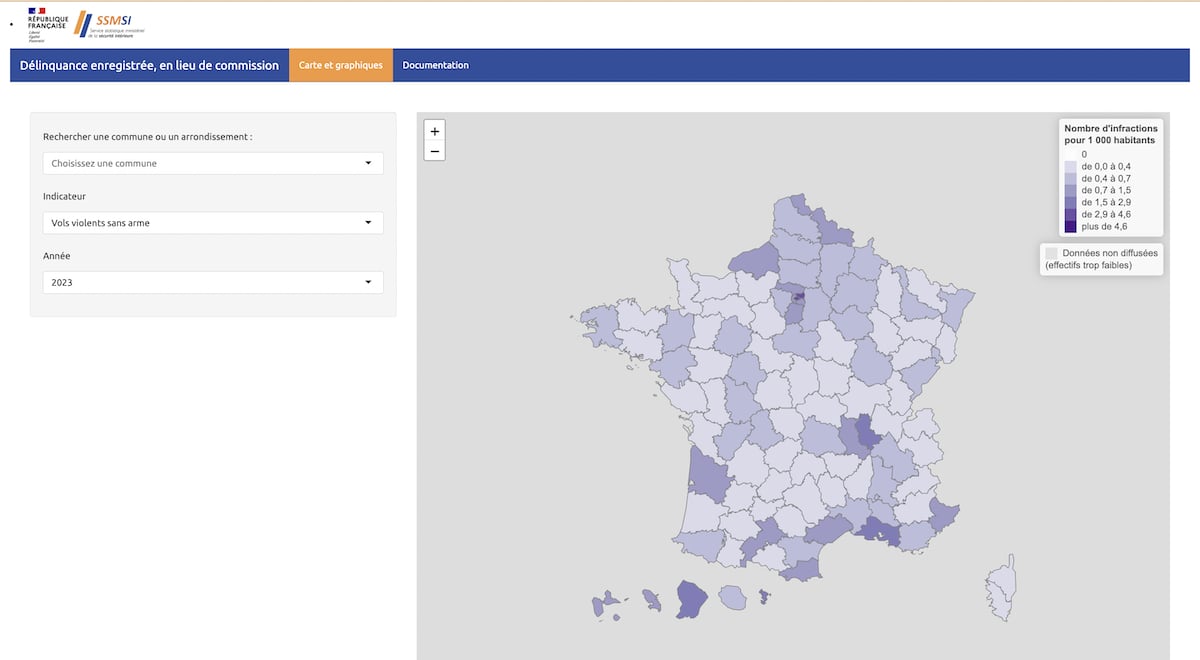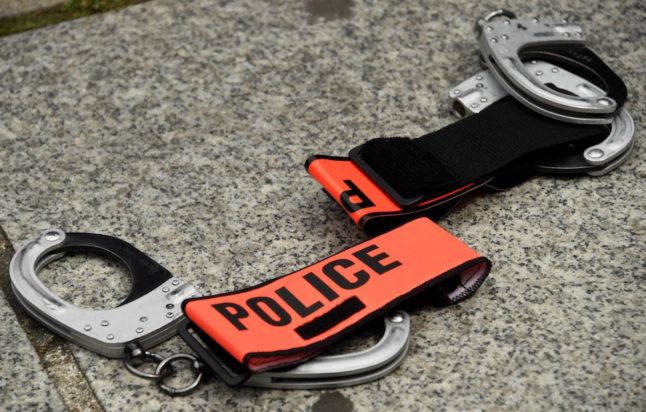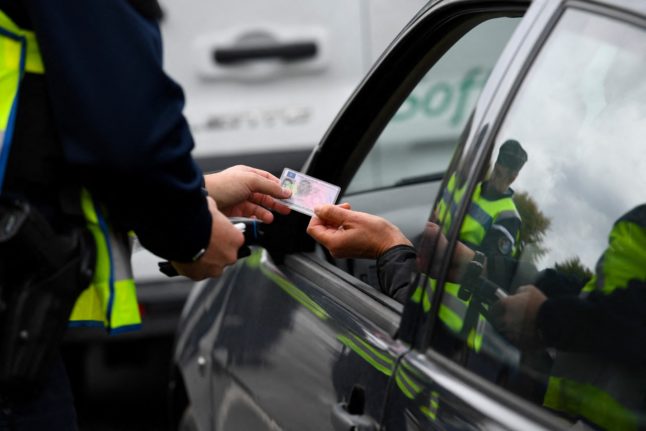France’s interior ministry has published updated crime statistics across France with data from 2023, and in response, French daily Le Parisien came up with a ranking for the safest towns and cities with more than 50,000 inhabitants across the country.
The publication based its score for each town on the rates of 10 different crimes listed by France’s interior ministry, which were split into four sub-sections: home burglaries, violent assaults, theft and petty theft, as well as a score for what it referred to as “the living environment” (drug trafficking and usage, as well as ‘deliberate property destruction and damage’).
1. Cherbourg-en-Cotentin
The city of Cherbourg-en-Cotentin, located in the Manche département in north-western France, had the lowest amount of crime overall, ranking in first place.
As of 2021, the city was home to 77,808 people, and it is famous for its Cité de la Mer (“city of the sea”) maritime museum.
In terms of home burglaries, the city has seen the number double over the last two years, but it still remains well below the national average with approximately three burglaries per 1,000 inhabitants as of 2023.
In comparison, the city of Paris recorded 8.6 burglaries per 1,000 homes, and the national average as of 2022 was 5.8 per 1,000 homes.
In an interview with Le Parisien, the mayor of Cherbourg-en-Cotentin credited their strong results by stating that “there is also a healthy dialogue between the municipal police, the national police and the justice system.”
2. Boulogne-Billancourt
After Cherbourg-en-Cotentin, the French daily ranked Boulogne-Billancourt, a suburb to the south-west of Paris, in second place.
Generally, the wealthy suburbs in the western and southern parts of the Paris region faired well.
Alongside Boulogne-Billancourt, six other locations in the Paris region were also listed in the top 10 safest places, including Courbevoie in fourth place, Versailles in fifth place, Antony in sixth place, Clamart in seventh place, Levallois-Perret in eighth place, and Maisons-Alfort in ninth place.
3. Ajaccio in Corsica
The Corsican capital came in third place, based on Le Parisien’s rankings.
The port city is notably where Napoleon Bonaparte was born, and it is home to his ancestral home – the Bonaparte house, now a museum.
As of 2020, the population was 72,647.
After Ajaccio, most of the other places that were ranked in the top 10 were towns in the Paris suburbs.
Courbevoie came in fourth place, Versailles in fifth place, Antony in sixth place, Clamart in seventh place, Levallois-Perret in eighth place, and Maisons-Alfort in ninth place.
In 10th place came Cagnes-sur-Mer in the Alpes-Maritimes département in southern France. After Cherbourg and Ajaccio it was the only other location outside of the Paris region to make the top 10.
Outside of Paris several medium-sized cities – namely Annecy (14th place) in south-eastern France, Montauban (15th place)near Toulouse in south-western France, and Vannes (18th place) in the western region Brittany – came in the top 20.
What about the larger cities?
France’s largest cities – Paris, Marseille, and Lyon – ranked significantly lower, coming in 103rd, 116th and 94th place respectively.
Le Parisien did not list a single city with more than 200,000 inhabitants in the top 30 – the best was Strasbourg, which came in 41st place.
After that, Nice (55th) and Nantes (59th) performed best for large urban areas.
It is worth noting that crime in large cities tends to look differently from that in rural areas or small and medium-sized cities.
Generally, crime in smaller cities tended to be less related to assault and battery or by violent theft, but they were more exposed to home burglaries.
In larger cities, theft and robbery – both violent and non-violent – were more common, but even this metric depended based on the city.
Paris, which gets millions of tourists per year, topped the charts nationally for non-violent theft (ie pickpocketing), while Marseille and Lyon had comparatively high levels of vehicle theft.
And in terms of sexual violence, the reported rate varied little based on city-size.
What is the general crime picture in France?
Based on the 2023 report by the interior ministry, crime has increased. However, when it comes to global rankings, the country still performs better than both the United States and United Kingdom.
Homicides went up by five percent in 2023, though this is smaller than the nine percent growth seen in 2022.
Meanwhile drug trafficking charges increased by four percent, which is comparatively smaller than the 14 percent increase in 2022 and 38 percent increase in 2021.
Assault and battery went up by seven percent in 2023, and sexual violence reports also increased by eight percent.
How to look at crime data yourself
They have also updated the interactive map of the country, which can be used by anyone interested in comparing crime rates between different départements in France.
You can access here.

When looking at the map, you can find information based on13 different types of crimes (indicateur) – including home robberies (cambriolage de logement), drug trafficking (trafic de stupéfiants), and sexual violence (violence sexuelle).
The map also allows you to select specific areas (communes), as well as the year you want to look at – going back to 2016.



 Please whitelist us to continue reading.
Please whitelist us to continue reading.
Member comments